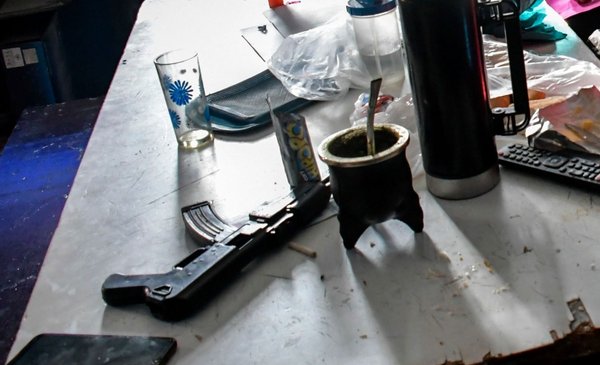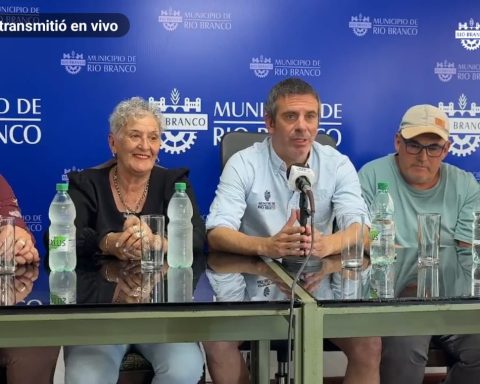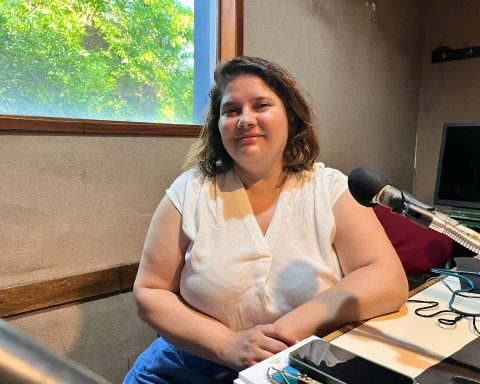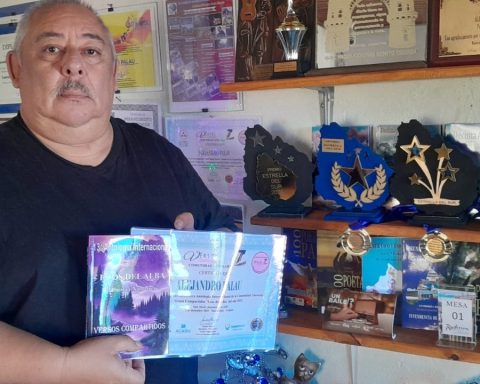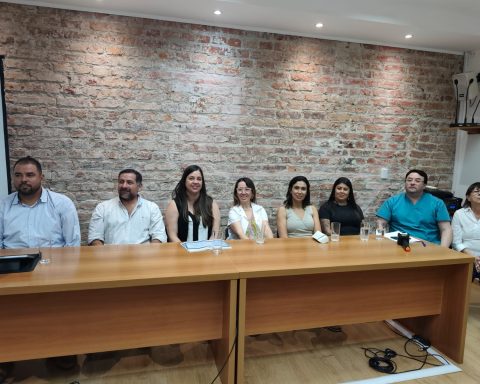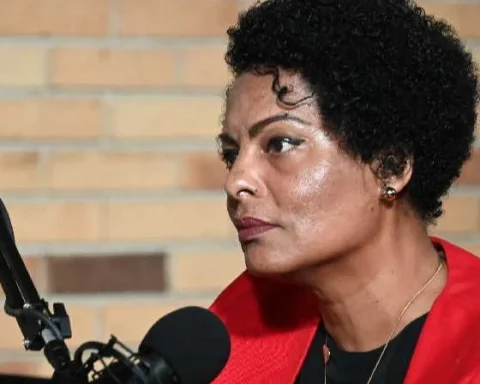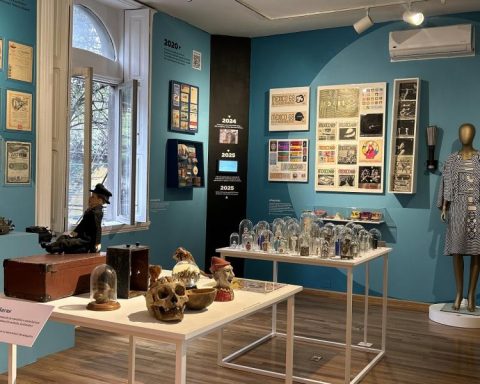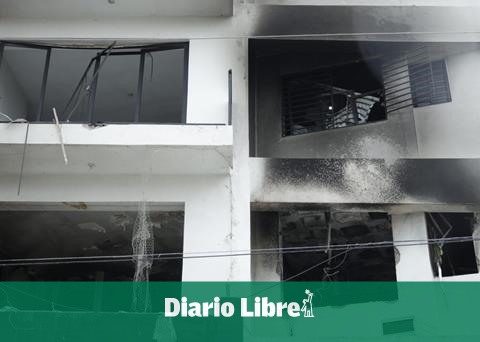The child tightens all the muscles of the face to contain the crying. But he knows that he is backed up against a wall and facing a drug kingpin who is going to make him pay for the rest. He can’t escape.
-In the hand…
“Oh, the little hand.”
The two shots, Zé Pequeno’s laughter and the boy’s cries –more of anguish than of pain– put an end to one of the scenes that marked Latin American cinema in the last two decades. city of god it showed a crudeness that, until recently, seemed to Uruguayans to be as far away as could only be framed in a favela in Brazil.
Twenty years later, Montevideo also has something of that to tell.
It was still daytime when the woman, between 20 and 30 years old, arrived at the emergency door of the Cerro Health Center. She just wanted to be healed She was missing two fingers on one hand.
Until then, it could have been one more case of domestic accidents that are seen from time to time in an emergency. But the warning signal went off right away when the doctors asked him: what happened to you?
Any. The woman did not want to explain, much less make a complaint to the policeman who was at the door. She limited herself to asking: cure me.
This was the first symptom that made the doctors who work in the west of Montevideo think that the violence was going up a notch. They receive shots or wounds with a knife every day – there, in the polyclinic on Capitan Tula Street in Piedras Blancas, in the Maciel Hospital, in the Old City – but finger amputations were something new for them.
The first case, which happened in the last quarter of 2021, was followed by a few more. Health professionals took it as a perception, which they could not explain with data. Because amputations, due to informal work or accidents, there were all my life. Some signs, however, made them interpret that they were not the usual ones.
—In some cases it was on the rise: first he came because his little finger was missing, then he came back and his ring finger was missing… —describes a doctor from Cerro, who speaks slowly, as if doubting whether he should be saying what he says.
“You know if it was a chainsaw or a grinder because it hooks him, pulls him, and slices off his finger.” Or we ask him if he is left-handed or right-handed… And the forensic doctor knows better than us: if it was accidental or if someone else did it to him, answers the head of Emergency at Maciel Hospital, Andrea Vaucher, who also worked for years in the State Insurance Bank and knows how to distinguish a patient who had an accident at work.
“The grinder cut is different. They came with a clean cut, like a machete —remarks the Cerro emergency doctor.
“The worker usually already knows, comes with the amputated part,” says Vaucher.
There is no analysis that can confirm why this series of amputations occurred at the end of last year in Cerro: they do not reach the Justice – they are not even reported – and they cannot be differentiated from the rest of the injuries of this type that are registered in medical records.
Police sources consulted by The Observer They say this is not something new. An official who worked for years in section 24 of Cerro is emphatic: this has happened all his life, whoever says otherwise is lying.
What doctors saw in the West in the last quarter of last year, however, they had not seen in the last decade.
Until now, these practices were associated with other Latin American countries and, specifically, with the violence caused by drug trafficking. A UNDP report released this week warns that while the illegal drug market in Uruguay is at an early stage, Everything suggests that it will follow the same path as the region. For this reason, he calls on the authorities to act quickly and generate state policies to combat it..
In December 2021, the Ministry of the Interior reported that the first synthetic drug production laboratory in Uruguay had been disrupted: two men –one of them Colombian– and three women were arrested. In April of this year another was detected.
as he knew The Observer, an increase in the amount of money moved by drug gangs meant that care has been reinforced. An example: there are drug traffickers who went from paying about $3,000 a night as a guard at a drug den to about $8,000.
One hypothesis to explain the change in violence is, for example, a market that handles more money and therefore has to exercise greater control. Violence is the only way that the business finds to guard what is outside the law.
But the Ministry of the Interior has an explanation that is the opposite of that most thriving market: it says that the police close drug mouths, it generates economic losses and indebtedness for drug traffickers, and violence for control of the territory increases.
The General Commissioner for Repression against Illicit Drug Trafficking, Alfredo Rodríguez, said it in Parliament last week: “We have seen in these days some new methodology that organizations apply when they find themselves in this situation of economic losses, when they are so hit . They have implemented the exercise of violence for intimidating purposes. We have on record the testimony of victims who have been violated, have been shot at or beaten, so that they go to certain centers and not buy at the competition.”
Some emergency doors, due to their location, are the ones that take the pulse of these issues. The Cerro Health Center treats patients from the entire western outskirts of the capital; The Maciel Hospital is also a reference for the west and is the first point of arrival for the prisoners of the Libertad Prison and the Santiago Vázquez prison. The Piedras Blancas polyclinic on Capitan Tula street covers the Borro, Las Acacias, Marconi, Nuevo Ellauri and Casavalle neighborhoods. In all three cases, they are the point of arrival for the areas hardest hit by crime.
Vaucher, medical coordinator of the Emergency door of the Maciel Hospital, did not detect an increase in doubtful amputations, although she did detect an increase in cable theft. In the last year, 1% of the patients who arrived due to stab wounds were referred for plastic surgery.
Although he warns that violence is showing an increase in injuries. Both in the Maciel Hospital and in El Cerro and in the Capitan Tula polyclinic, in Piedras Blancas -three assistance centers where those shot or wounded with cuts arrive daily-, they are seeing that the shots are going directly to the legs or to the arms. They are not to kill.
In Maciel, consultations for trauma in general – all kinds of injuries – grew 10% when compared to the first year of the pandemic.
—The victim is facing the attacker and the attacker does not kill him: he pulls him down from the knees —says a doctor who works in an emergency door but who does not want to be named in this article.
They detect that by the path of the bullet in the body.
At the most conflictive emergency doors there are always temporary police officers – who provide security support to institutions – who take note of the cases of shots and stab wounds.
—When the policeman approaches, suddenly you see that the patient escapes. Or the family member comes in and says he’s going to get her something and they both disappear, Vaucher describes.
Does it happen often?
“What are they escaping from us?” Yes, of course, they leave with the wound.
Therein lies the difficulty in framing this increase in injuries that both doctors and police perceive. And there is another piece of information: during the pandemic, 60 emergencies were attended to at the Maciel Hospital per day: 40 were respiratory, 10 were cardiovascular, and 10 were due to firearm or stab wounds. It happened at a time when there was little movement on the street.
—People were locked in the house, quiet, we shouldn’t have seen all these injuries. But yes, we saw them —describes the head of the emergency, who has been working there for 22 years.
Today they have around 120 consultations per day. The main reason: trauma.
In the last year, 50% of the care at the emergency door of Maciel was due to traffic accidents. 25% were due to firearm injuries; 17%, due to stab wounds; and the rest, due to other causes –such as falls, work accidents, hanging–.
permeates workers
Camilo dos Santos
Maciel Hospital.
On Capitan Tula Street in Piedras Blancas, sometimes everything seems calm. The day can be sunny, the waiting room quiet, and people waiting their turn to be served. Inside, in one of the cubicles, there may be a man lying down with a square bandage on his abdomen that covers the wound.
The tension, the same, is noticeable.
An official from the polyclinic who sometimes receives the wounded goes out to the sidewalk with dissimulation, and, like a whisper, comments:
—Violence is always here. They yell at us to attend to them quickly. The threats…
Until a few months ago, the Maciel Hospital was receiving twice as many injured prisoners as it had planned for its quota. This implies a greater control operation and increases the pressure on the workers. And he saw himself in a specific situation: weeks ago, a policeman who was guarding a prisoner got into a fight with a male nurse.
The demand for more security is something of every day.
what will the children play
In Montevideo, a one-year-old baby had his Zé Pequeno turned into a drug.
At 11:30 p.m. on a September 2021 night, a Cuban woman arrived on Maciel street with her son convulsing. Her innocence made him play with a dose of base paste that, according to her mother, she accidentally put in her mouth. By chance, there was a neurologist specializing in children at the hospital at the time. They tried to revive him five times.
He died before midnight.
The Police later learned that the place where the child was was a drug dealer.
“That was not seen before. For a child to come to the door. That has also changed the practice—says Aníbal Dutra, director of the hospital.
For doctors and health workers, this is just one more case of that which the numbers do not measure exactly, but which they sniff out with the perception of a police dog: violence is taking a step up.
